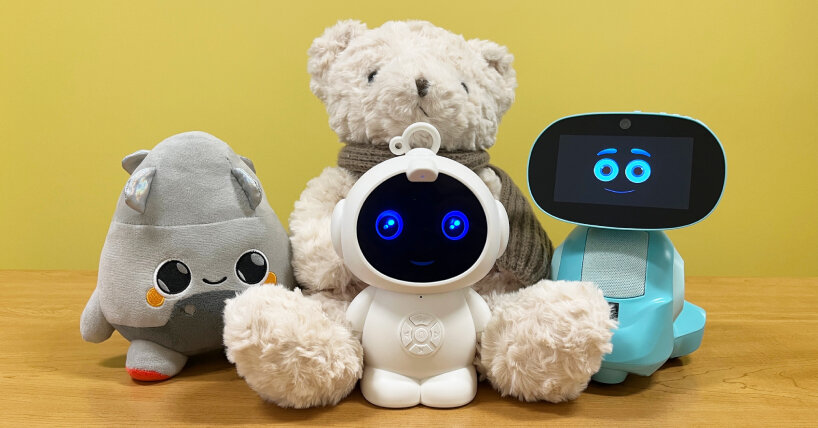
Beyond Choking Hazards: The Critical Rise of AI Toy Safety Regulations
The New Frontier: Where Digital Risks Meet Physical Play
The modern playroom is undergoing a radical transformation. Gone are the days when toy safety concerns were limited to small parts, sharp edges, and non-toxic materials. Today’s toy boxes are increasingly filled with smart, connected, and artificially intelligent companions. From voice-activated dolls and educational robots to programmable drone kits and interactive plushies, the integration of AI has unlocked unprecedented levels of engagement and learning. However, this technological leap forward has also opened a Pandora’s box of new, complex risks that extend far beyond the physical realm. The latest AI Toy Safety News is no longer just about preventing accidents; it’s about protecting privacy, ensuring cybersecurity, and promoting ethical digital interactions for the most vulnerable members of our society.
As the market for these advanced playthings explodes, regulators, manufacturers, and parents are grappling with a new paradigm of safety. The conversation is shifting from “Is it physically safe?” to “Is it digitally and psychologically sound?” This evolution is driving significant legislative action worldwide, with governments working to update decades-old toy safety directives to address the intangible threats posed by connected technology. The emerging regulations represent a crucial intersection of consumer protection, data privacy laws like GDPR, and overarching AI governance frameworks. This article delves into the multifaceted world of AI toy safety, exploring the core pillars of the new regulations, the practical implications for the entire toy ecosystem, and the best practices for navigating this exciting yet perilous new era of play.
From Physical Hazards to Digital Threats
The history of toy safety is written in regulations born from unfortunate accidents. The new chapter, however, is being shaped by data breaches and privacy violations. While a traditional teddy bear’s greatest risk might be a loose button eye, an AI-powered one presents a different set of concerns. Recent AI Plush Toy News has highlighted vulnerabilities in smart toys that could allow strangers to communicate with a child through the device. Similarly, Robot Toy News frequently covers stories of educational bots with unsecured Bluetooth connections, potentially exposing household Wi-Fi networks to attack. These incidents underscore a fundamental shift: the threat is no longer just the toy itself, but the network it connects to and the data it collects. This new landscape demands a holistic approach, where the latest Smart Toy News is as much about software vulnerabilities as it is about material durability.
The Global Regulatory Response
In response to these growing concerns, regulatory bodies are taking action. The European Union, for instance, is pioneering a comprehensive approach that intertwines its General Data Protection Regulation (GDPR), a revised Toy Safety Regulation, and the landmark AI Act. This legislative trifecta aims to create a robust framework that holds manufacturers accountable for the entire lifecycle of an AI toy. It’s not just about the final product; it’s about the data processing, the algorithmic design, and the ongoing software support. This proactive stance is creating ripples globally, influencing how other nations approach the topic and pushing the industry toward a higher standard. The focus of AI Toy Ethics News has moved from academic discussion to actionable policy, forcing brands to consider the ethical implications of creating a digital AI Companion Toy News feature for a child.
Deconstructing AI Toy Safety: The Four Pillars of Trust
To fully grasp the scope of modern AI toy safety, it’s essential to break it down into four interconnected pillars. These pillars represent the core areas that new regulations are targeting and provide a framework for manufacturers to design safer products and for parents to make informed purchasing decisions.
1. Cybersecurity and Network Integrity
At its most basic level, an AI toy is an Internet of Things (IoT) device. Like any other connected gadget, it can be a weak link in a home’s digital security. A primary concern highlighted in Voice-Enabled Toy News is the risk of eavesdropping. If a toy’s connection is unencrypted, a malicious actor on the same network could potentially intercept audio streams. Key vulnerabilities include:

- Default, non-unique passwords: Many early smart toys shipped with hardcoded passwords, making them easy targets.
- Insecure data transmission: A lack of end-to-end encryption for data sent between the toy, its companion app (a focus of AI Toy App Integration News), and cloud servers.
- Unpatched firmware: Failure to provide regular security updates leaves known vulnerabilities open to exploitation. This is a critical topic in AI Toy Updates News.
A case study involves a popular interactive doll that was found to have a vulnerability allowing anyone with a smartphone to connect to it via Bluetooth and upload or listen to audio recordings, turning a beloved toy into a potential surveillance device.
2. Data Privacy and Transparency
AI toys are data-gathering machines. An AI Storytelling Toy News feature might record a child’s voice to personalize narratives, while an AI Learning Toy News platform tracks a child’s educational progress. This data is invaluable for personalizing the experience but raises significant privacy questions. Regulations are now demanding clear answers to the following:
- What data is collected? (e.g., voice snippets, photos, usage logs, location data).
- Why is it collected? (The principle of data minimization suggests collecting only what is necessary).
- Where is it stored and for how long?
- Who has access to it? (Third-party advertisers, data brokers?).
The latest Robotic Pet News often centers on how these devices learn a child’s habits. Parents need transparent, easy-to-understand privacy policies, not dense legal documents, to consent meaningfully to this data collection.
3. Algorithmic Accountability and Content Filtering
This is perhaps the most novel and complex pillar. The “AI” in an AI toy is powered by algorithms that can learn and generate content. This introduces the risk of bias and inappropriate behavior. For example, an AI Language Toy News item might report on a chatbot that inadvertently teaches a child biased language it learned from its training data. An AI Drawing Toy News feature could potentially generate unsettling or inappropriate images. Key concerns include:
- Algorithmic Bias: Training data that reflects societal biases can lead to toys that reinforce stereotypes related to gender, race, or culture.
- Inappropriate Content Generation: Generative AI, if not properly sandboxed and filtered, could expose children to harmful language or concepts.
- Psychological Impact: How does a child’s interaction with an AI Plushie Companion News-worthy toy affect their social and emotional development? The lines between play and emotional manipulation can become blurred.
4. Physical-Digital Interaction Safety
Finally, the AI’s “brain” directly impacts the toy’s physical actions, creating a new category of safety risk. An AI Drone Toy News story might cover an incident where faulty sensor software caused a drone to crash into a child. A Humanoid Toy News report could detail how a robot’s powerful motors, if not properly controlled by its AI, could cause injury. The reliability of AI Toy Sensors News is paramount for ensuring that a toy can safely navigate its environment. This pillar merges traditional mechanical safety with cutting-edge software reliability, demanding rigorous testing of how the toy’s code translates into real-world movement and interaction.
The Ripple Effect: How Safety Regulations are Reshaping the Toy Industry
The push for comprehensive AI toy safety is sending shockwaves through the entire industry, from small startups to established giants. These new regulations create challenges and opportunities, fundamentally altering how toys are designed, manufactured, marketed, and sold.
For Manufacturers and Developers

The burden of compliance falls squarely on the shoulders of toy creators. This goes far beyond simple product testing. Companies must now integrate “Privacy by Design” and “Security by Design” principles from the earliest stages of development. The latest AI Toy Design News emphasizes a shift towards secure development lifecycles, requiring expertise in cybersecurity, data ethics, and regulatory law—skills not traditionally found in a toy company. This impacts everything from AI Toy Prototypes News to mass production. For a company focused on Toy Factory / 3D Print AI News, it means ensuring the digital files and connected printers are secure. For those in AI Toy Startup News, the cost of compliance can be a significant barrier to entry, while established players in AI Toy Brand News must overhaul their existing product lines and development processes. The need for a secure backend has also led to a rise in specialized B2B services, a trend seen in Toy AI Platform News.
For Parents and Educators
For consumers, the new landscape demands a higher level of digital literacy. Parents can no longer rely on age recommendations and physical safety seals alone. They must become discerning digital consumers, capable of vetting a toy’s digital footprint. This involves:
- Reading Reviews with a Critical Eye: Looking beyond features and fun factor to find information on security and privacy in AI Toy Reviews News.
- Engaging with the Community: Sharing experiences and security warnings through forums and social media, contributing to the broader AI Toy Community News.
- Understanding Privacy Policies: Learning to spot red flags in how a company handles their child’s data.
- Utilizing Resources: Following AI Toy Tutorials News to learn how to properly configure a toy’s security settings.
This is especially critical for educational products. While STEM Toy News and Educational Robot News highlight the immense learning potential of products like Coding Toy News-featured kits or Smart Construction Toy News sets, educators must ensure these tools don’t compromise student data.
Building a Safer Playtime: A Practical Guide for All Stakeholders
Navigating this complex environment requires a proactive and collaborative approach. Ensuring the safety of AI-powered play is a shared responsibility. Here are actionable recommendations for both manufacturers and consumers.

A Manufacturer’s Checklist for Trust
To build the next generation of safe and successful AI toys, from an AI Puzzle Robot News item to a complex Robot Building Block News system, manufacturers should prioritize the following:
- Embrace “Security by Design”: Build security into the product from day one. This includes using strong encryption, eliminating default passwords, and conducting regular penetration testing.
- Practice Data Minimization: Only collect data that is absolutely essential for the toy’s function. Be transparent about what is collected and why.
- Provide Clear Parental Controls: Offer parents a simple, intuitive dashboard to manage privacy settings, playtime limits, and content filters. This is crucial for AI Toy App Integration News.
- Commit to Long-Term Support: Plan for regular, over-the-air firmware updates to patch security vulnerabilities throughout the toy’s expected lifespan.
- Foster Transparency: Communicate openly about data policies and security measures. When a vulnerability is discovered, disclose it responsibly and provide a timely fix. This builds brand trust, a key theme in AI Toy Innovation News.
A Parent’s Toolkit for Digital Vetting
Parents are the ultimate gatekeepers of the playroom. Before bringing an AI toy home, and during its use, consider these steps:
- Do Your Homework: Research the toy and the company behind it. Search for the product name along with terms like “vulnerability,” “data breach,” or “privacy concerns.” Check reputable sources for reviews.
- Secure the Setup: During installation, change any default passwords to something strong and unique. Review the app’s permission requests carefully—does a simple AI Musical Toy News feature really need access to your contacts?
- Review Privacy Settings: Go through the toy’s parental controls and app settings. Opt-out of any non-essential data collection and marketing communications.
- Supervise and Engage: Interact with your child and the toy. Understand how it works and the kind of data it’s gathering. Use it as a teaching moment about digital citizenship and online safety.
- Keep It Updated: Just like a phone or computer, enable automatic updates for the toy’s software and its companion app to ensure it has the latest security patches.
The Future of Play is Smart, But It Must Be Safe
The integration of artificial intelligence into toys is not a passing fad; it is the future of play. The latest AI Toy Trends News points towards even more sophisticated, personalized, and immersive experiences, with AI Toy Future Concepts News exploring everything from holographic playmates to toys that grow and evolve with a child. However, for this future to be bright, it must be built on a foundation of safety and trust. The current global regulatory push is a critical step in establishing the necessary guardrails.
The challenge ahead is to strike a balance—to foster the incredible innovation seen in AI Toy Research News without sacrificing the fundamental rights of children to privacy and security. For manufacturers, this means embracing safety as a core design principle, not an afterthought. For parents, it means developing a new set of skills to navigate the digital playroom. Ultimately, the goal is to ensure that the next generation of toys continues to do what toys have always done best: inspire wonder, creativity, and joy, safely and securely.



